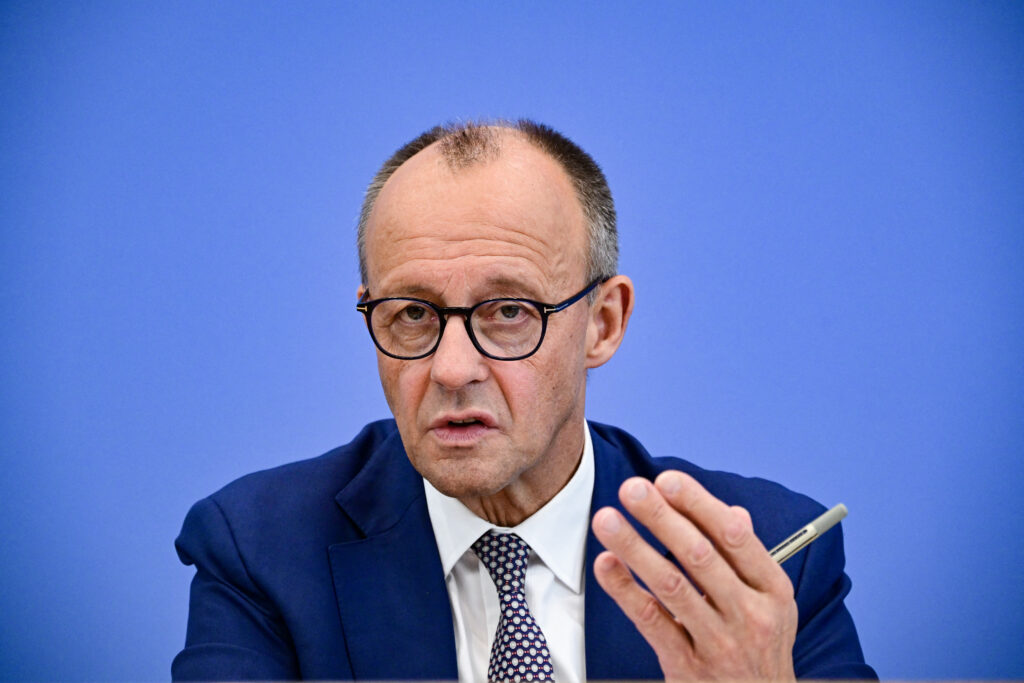The Merz government has formulated ambitious plans. The coalition agreement between the CDU, CSU, and SPD states: “We are positioning Germany as a leading location for future digital technologies.” Artificial intelligence is explicitly considered a key technology. “We are committed to AI breakthrough innovations.” The plan is to massively promote data centers and bring a European “AI Gigafactory” to Germany. A digitalization initiative among network operators is intended to facilitate integration. The first Gigafactory is scheduled to begin operations in 2027. (fr: 18.08.25)
German networks overloaded – risk for the Merz government
But the reality is different. The Merz government wants to lead the country out of the fax era and make it internationally competitive. To keep pace with the US and China, Germany needs strong digital infrastructure. Data centers are indispensable, but they are also power guzzlers. A medium-sized center with 5 to 20 megawatts of connected capacity consumes as much electricity as up to 50,000 households.

Photo by Tobias SCHWARZ / AFP
Cloud services and AI systems like ChatGPT are driving demand. According to Bitkom, there were around 1,100 data centers in 2010, and by 2024, the number had risen to over 2,000. Almost half of these serve cloud applications. The 3,000 mark could be exceeded in the coming years. Network operators warn: “The German networks are not at their limit, they are overloaded.”
Warnings from the industry
Transmission system operators are reporting a flood of applications. 50Hertz, responsible for the east and parts of the north, is now registering data center requests with up to 1,000 megawatts. That’s enough to supply millions of households. E.DIS reports 170 requests in Brandenburg and Mecklenburg-Western Pomerania. However, the grid can only handle 2,400 megawatts. Projects in the Berlin area are already failing. Google has already given up.
At the same time, further burdens are emerging. To secure the energy transition by 2045, battery storage systems must be connected. 50Hertz reports 700 applications. Westnetz reports data center requests totaling ten gigawatts. “If the existing grid capacity is insufficient, the grid must be upgraded or expanded,” explains Westnetz. Approvals for high-voltage lines can take up to twelve years.
Bottlenecks in the Rhine-Main area
The situation is particularly problematic in Frankfurt. DE-CIX operates one of the world’s largest internet exchanges there. One-third of its total data center capacity is concentrated in this region. But capacity is no longer sufficient. “Current demand significantly exceeds the available capacity in the Frankfurt network area,” explains Mainova.
The situation is also worsening in North Rhine-Westphalia. Data centers are to replace lignite between Cologne and Aachen. RheinNetz has received 14 applications. Battery storage systems and industrial projects are also placing additional strain on the networks. Where capacity is lacking, expensive expansion is required. But this significantly delays implementation.
Merz government without special rights
A key problem lies in the legal situation. Network operators must process applications based on the date they are received. There are no special rights. “Even if Chancellor Merz calls and asks us to connect his AI Gigafactory to the grid, we couldn’t do it if others are already on the list,” explains one network operator.
Munich’s municipal utilities are therefore advocating for new regulations. From a technological and time-related perspective, central locations for data centers and large-scale storage facilities make sense. “For efficient implementation without disadvantaging forward-looking network operators, an adjustment of the regulatory framework is necessary,” they state.
Looking to the future
The federal government is planning a massive network expansion. The situation could ease from the mid-2030s onward. However, the Merz government risks losing valuable time. Other regions have long since secured key locations. Germany is in danger of relinquishing its role in the global AI landscape before its own projects get off the ground.
